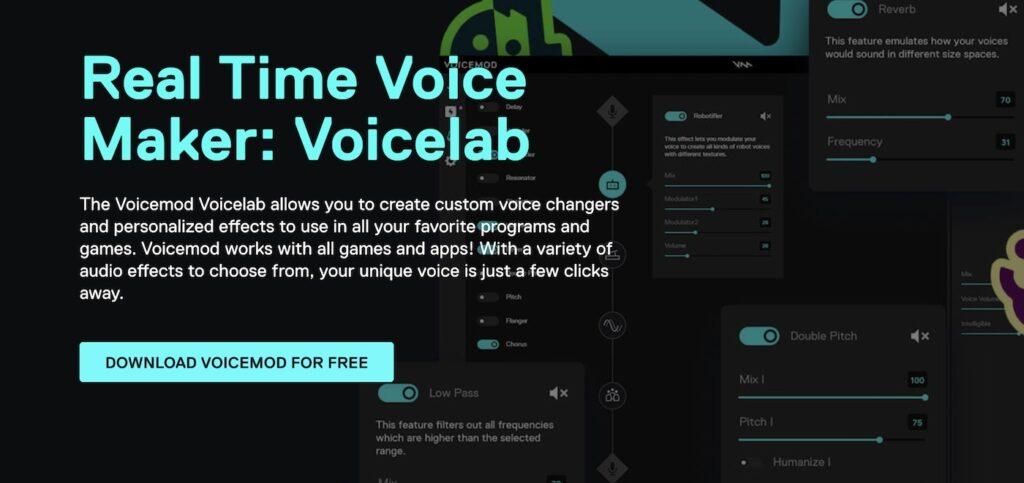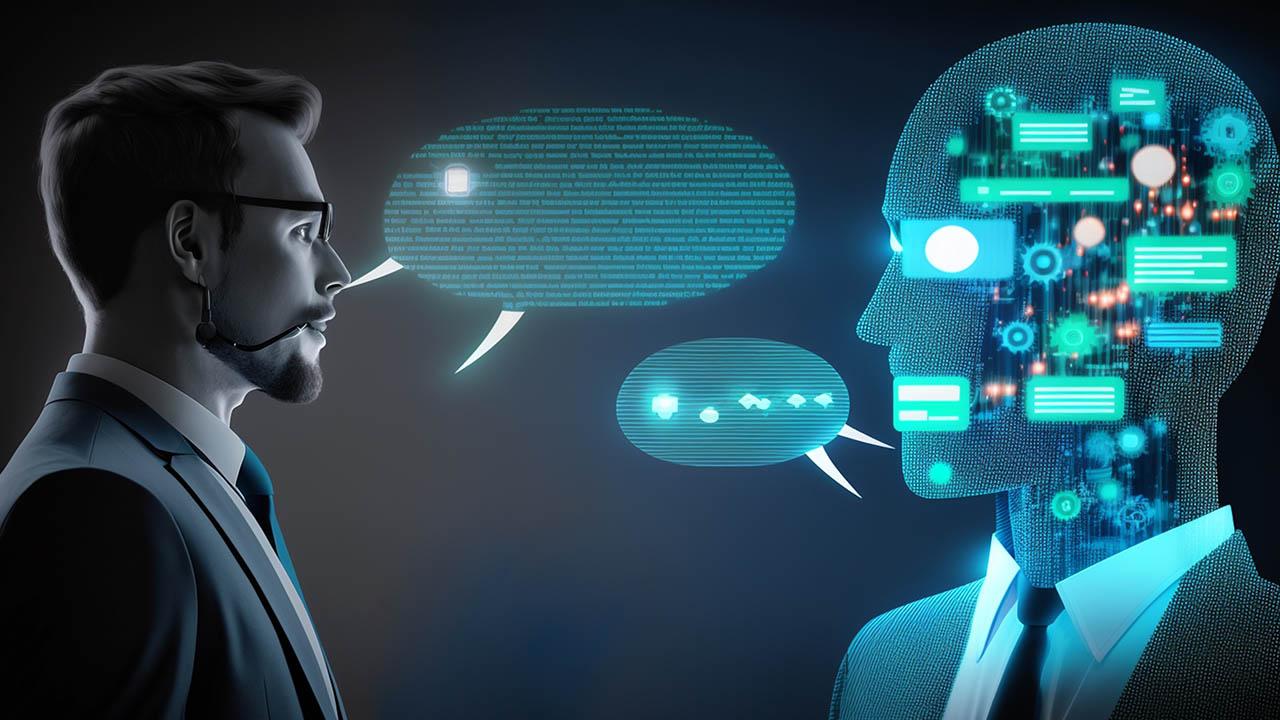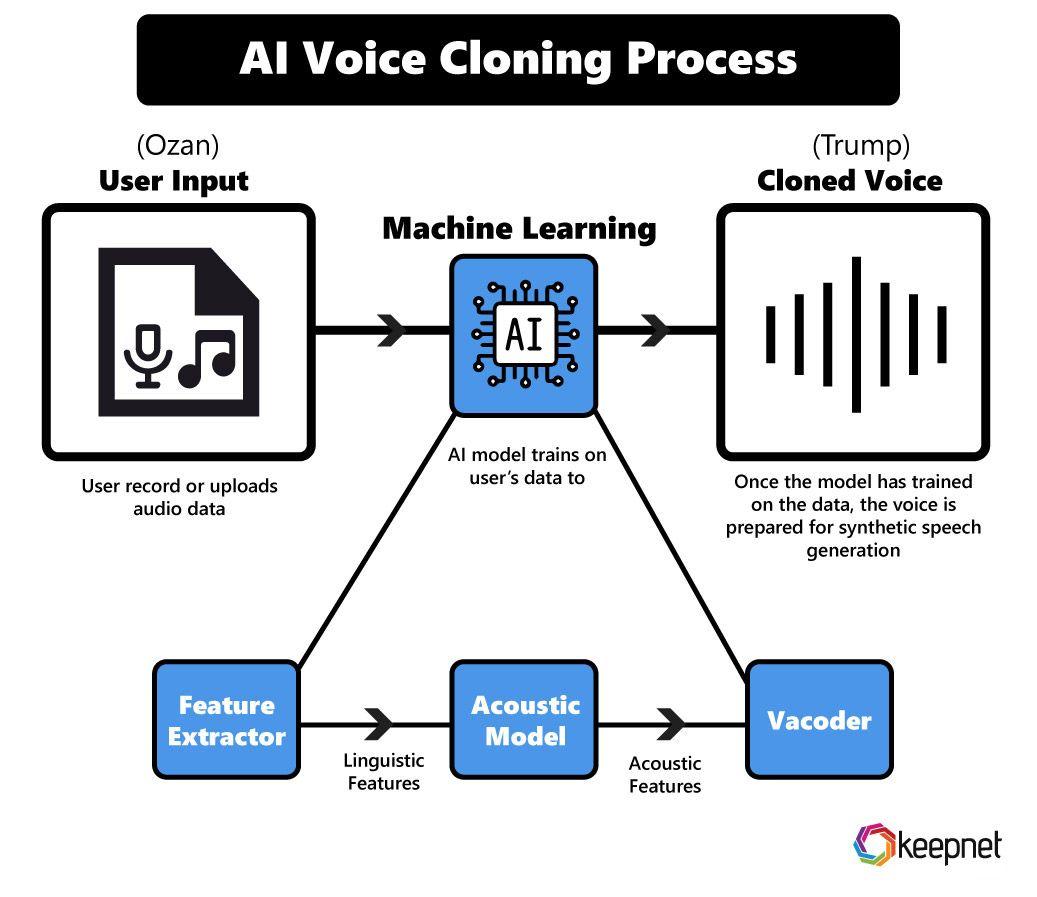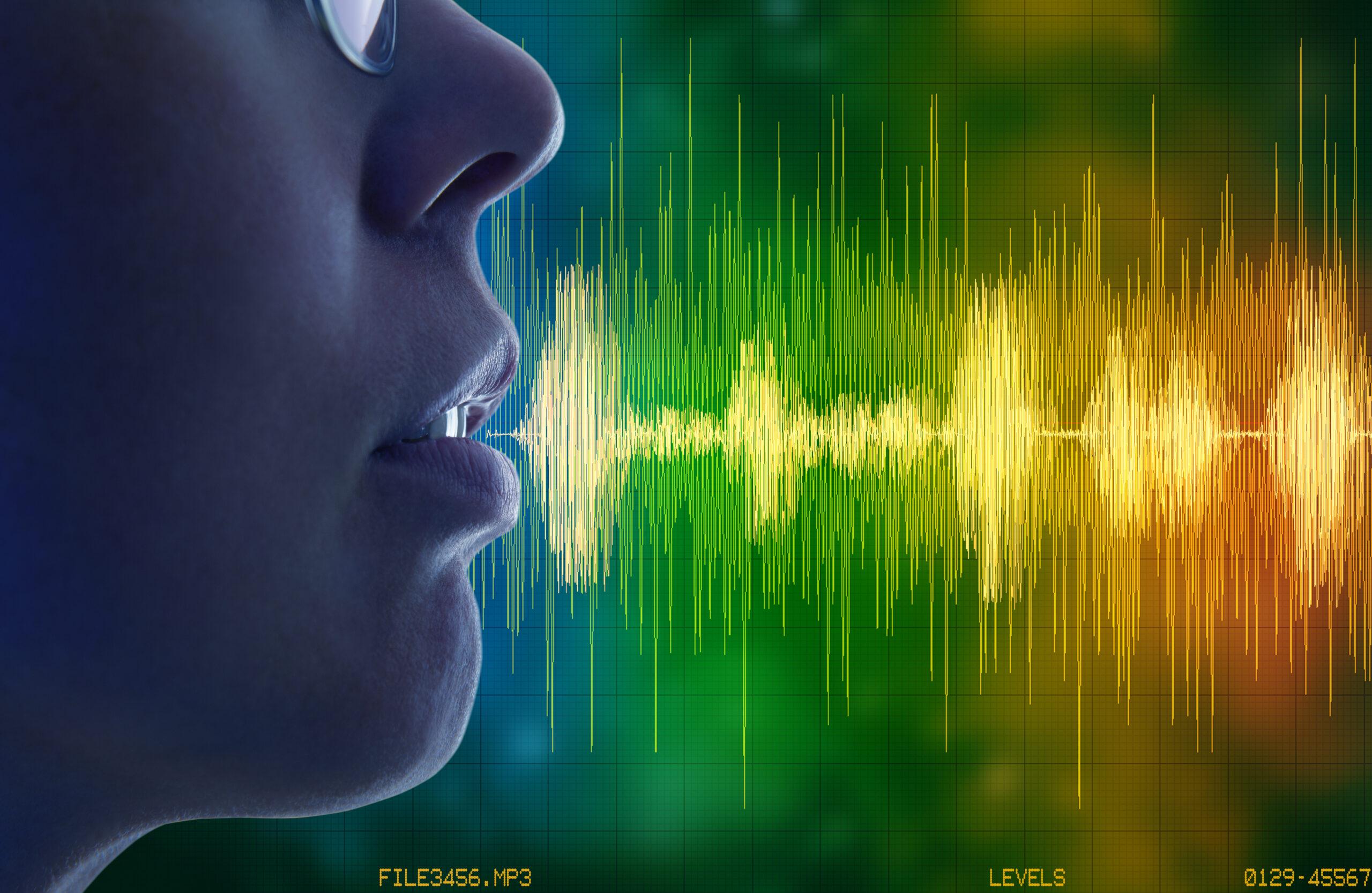In an era where technology increasingly mimics the nuances of human expression, AI voice cloning stands at the forefront of this fascinating evolution. Imagine a world where your voice, or that of a public figure, can be digitally recreated with uncanny accuracy-capturing not just words, but tone, emotion, and inflection. This remarkable advancement opens doors to innovative applications, from personalized virtual assistants to immersive entertainment experiences. Yet, alongside its promise lies a complex web of risks and legal challenges. As AI voice cloning technology continues to advance, understanding the tools behind it, the potential pitfalls, and the evolving legal landscape becomes essential. This article delves into the multifaceted world of AI voice cloning, exploring its capabilities, the ethical quandaries it presents, and the regulatory frameworks striving to keep pace.
Table of Contents
- Understanding AI Voice Cloning Technology and Its Applications
- Evaluating the Ethical and Privacy Risks of Voice Synthesis
- Navigating Legal Challenges and Regulatory Frameworks
- Best Practices for Responsible Use and Mitigation Strategies
- Future Trends and Innovations in AI Voice Cloning
- Frequently Asked Questions
- Future Outlook
Understanding AI Voice Cloning Technology and Its Applications
Voice cloning technology harnesses the power of artificial intelligence to replicate human speech with astonishing accuracy. By analyzing vast datasets of recorded voices, AI models can recreate the unique timbre, pitch, and cadence of a person’s voice, enabling the generation of synthetic speech that is nearly indistinguishable from the original. This capability is driven by deep learning algorithms and neural networks, which continuously improve the nuance and expressiveness of the cloned voice.
The applications of this technology span a diverse range of industries, unlocking new creative and practical opportunities. In entertainment, voice cloning enables the revival of iconic voices for films or video games without requiring the original actor’s presence. For accessibility, it empowers individuals with speech impairments to communicate more naturally. Brands also use voice cloning to personalize customer interactions or create dynamic voice-overs for marketing campaigns.
Key applications include:
- Personalized virtual assistants with familiar voices
- Audio content creation and dubbing
- Preservation of voices for legacy and heritage
- Real-time language translation with voice consistency
| Application | Benefit | Example |
|---|---|---|
| Entertainment | Reviving voices of deceased actors | Film character voice restoration |
| Accessibility | Enhancing communication for speech disabilities | Custom synthetic voices for assistive tech |
| Marketing | Dynamic personalized advertising | Voice ads tailored to user preferences |
| Education | Multilingual voice tutoring | Consistent voice across language lessons |
Evaluating the Ethical and Privacy Risks of Voice Synthesis
As voice synthesis technology advances, the boundary between human and machine-generated speech becomes increasingly blurred, raising profound ethical and privacy concerns. The ability to replicate a person’s voice with near-perfect accuracy opens doors not only for innovation but also for misuse. When voices can be cloned without consent, the potential for identity theft, misinformation, and manipulation escalates dramatically.
One core ethical dilemma lies in ownership and consent. Unlike physical property, a voice is an intangible personal attribute, deeply tied to an individual’s identity and reputation. Should there be strict regulations mandating explicit permission before someone’s voice is cloned? How do we ensure that synthesized voices are not weaponized to fabricate statements or actions, eroding public trust? These questions remain at the forefront of debates surrounding voice synthesis.
Privacy risks also extend beyond individual concerns. Synthesized voices can be employed to bypass biometric security systems reliant on voice authentication, exposing sensitive data to cybercriminals. Furthermore, the proliferation of realistic fake audio can severely impact journalists, public figures, and everyday users, potentially leading to harmful consequences like defamation or false evidence in legal settings.
- Non-consensual cloning: Using someone’s voice without their knowledge.
- Deepfake audio scams: Fraudulent calls impersonating trusted individuals.
- Data breaches: Voice samples leaked or stolen from databases.
| Risk Category | Potential Impact | Mitigation Strategy |
|---|---|---|
| Identity Theft | Impersonation for financial fraud | Multi-factor authentication beyond voice |
| Reputation Damage | False statements attributed to individuals | Voice watermarking and digital signatures |
| Privacy Invasion | Unauthorized data harvesting | Strict data protection laws and audits |

Navigating Legal Challenges and Regulatory Frameworks
As AI voice cloning technology accelerates, it inevitably treads into complex legal territory. The intersection of intellectual property rights, privacy laws, and consent creates a labyrinth for creators, companies, and users alike. One of the primary challenges lies in defining ownership over a cloned voice-does it belong to the original speaker, the developer of the AI, or the user who activates it? Jurisdictions vary widely on this issue, often leaving stakeholders in a gray area prone to costly disputes.
Legal frameworks must evolve to address the nuances of synthetic voices. Many countries have started implementing regulations that mandate explicit consent from the individual whose voice is being cloned. Without such consent, the distribution or commercial use of AI-generated voice content could be deemed illegal, exposing offenders to penalties ranging from fines to criminal charges. However, enforcement remains inconsistent due to the difficulty in tracking and authenticating voice origins on vast digital platforms.
To provide clarity, here’s a quick comparison of regulatory stances in different regions:
| Region | Consent Requirement | Penalties | Notable Legislation |
|---|---|---|---|
| European Union | Explicit written consent | Fines up to €20M or 4% global turnover | GDPR & ePrivacy Directive |
| United States | Varies by state; some require consent | Civil lawsuits, injunctions | California Consumer Privacy Act (CCPA) |
| China | Mandatory consent with data protection | Fines and license revocation | Personal Information Protection Law (PIPL) |
Moreover, companies utilizing AI voice cloning must invest in robust compliance mechanisms and transparent user agreements. Incorporating traceability features within voice synthesis tools can aid in verifying authenticity and consent status, potentially mitigating legal risks. Ultimately, staying informed and proactive about regulatory updates is essential for navigating this rapidly evolving landscape responsibly.

Best Practices for Responsible Use and Mitigation Strategies
Harnessing the power of AI voice cloning demands a conscientious approach that balances innovation with ethics. To ensure responsible use, it is essential to implement transparent consent protocols. This means obtaining explicit permission from individuals before replicating their voices, making sure they understand the scope and implications of the technology. Such transparency not only respects personal rights but also builds trust between creators, users, and audiences.
Mitigation strategies must include robust technical safeguards. Employing watermarking and traceability techniques can help distinguish cloned audio from genuine recordings, reducing the risk of misuse. Additionally, developers should invest in detection tools that can identify synthetic voices quickly, enabling platforms to flag or block malicious content effectively. Collaboration between AI researchers, legal experts, and industry stakeholders is crucial to create adaptive standards that evolve alongside the technology.
On an organizational level, establishing clear policies and educational initiatives around AI voice cloning can empower users to navigate this technology responsibly. Encouraging ethical guidelines and promoting awareness about potential legal and social consequences can prevent inadvertent harm. Companies should also foster a culture of accountability, ensuring that any deployment of voice cloning tools aligns with both regulatory frameworks and societal values.
| Best Practice | Purpose | Example |
|---|---|---|
| Explicit Consent | Protect individual rights | Signed agreements before voice data use |
| Watermarking | Identify cloned audio | Embedding inaudible signals |
| Detection Tools | Prevent fraud and misinformation | AI-driven content scanners |
| Ethical Training | Raise awareness | Workshops on responsible AI use |

Future Trends and Innovations in AI Voice Cloning
As AI voice cloning technology matures, several groundbreaking advancements are poised to reshape how voices are synthesized and leveraged across industries. One prominent trend is the integration of emotionally adaptive voice models, which can modulate tone, pitch, and pace to convey authentic emotions, enhancing user engagement in customer service, entertainment, and education. This shift towards emotional intelligence in voice cloning will blur the lines between human and machine-generated speech, creating immersive and personalized auditory experiences.
Moreover, the rise of multilingual and code-switching voice clones will cater to global audiences by seamlessly switching between languages within a single conversation. This capability will revolutionize communication platforms and virtual assistants, enabling more natural and fluid interactions across cultural boundaries. Coupled with advances in real-time processing, AI voices will become instantaneously adaptable to diverse linguistic contexts without compromising clarity or accent authenticity.
Ethical frameworks and secure voice verification systems will evolve hand-in-hand with technological innovation. Future AI voice cloning tools will likely embed blockchain-based provenance tracking to authenticate voice origins, combating impersonation and misuse. This will empower users and regulators to trace content back to its source, ensuring accountability while preserving privacy. As a result, trust in AI-generated voices will strengthen, driving broader adoption in sensitive sectors such as finance, healthcare, and legal services.
| Innovation | Impact | Timeline |
|---|---|---|
| Emotionally Adaptive Voices | Enhanced user engagement | 1-2 years |
| Multilingual Code-Switching | Global communication | 2-3 years |
| Blockchain Voice Verification | Improved security & trust | 3-5 years |
- Adaptive personalization: AI clones tailor voices to individual preferences and contexts.
- Hybrid human-AI collaboration: Seamless blending of real and synthetic voice elements.
- Regulatory-driven innovation: Legal demands will shape safer cloning methodologies.
Frequently Asked Questions
Q&A: AI Voice Cloning – Tools, Risks, and Legal Impacts
Q1: What exactly is AI voice cloning?
A1: AI voice cloning is a technology that uses artificial intelligence to replicate a person’s voice. By analyzing audio samples, AI models can generate speech that sounds strikingly similar to the original speaker, often mimicking tone, pitch, and cadence with impressive accuracy.
Q2: Which tools are commonly used for AI voice cloning?
A2: Popular AI voice cloning tools include Descript’s Overdub, Resemble AI, iSpeech, and Lyrebird (acquired by Descript). These platforms offer user-friendly interfaces and powerful algorithms that enable users to create voice models from just minutes of recorded speech.
Q3: How do these tools work under the hood?
A3: At their core, these tools employ deep learning techniques, particularly neural networks trained on vast datasets of human speech. They learn to capture the unique vocal characteristics of a speaker and reproduce them by generating synthetic audio that matches the style and nuances of the original voice.
Q4: What are the main risks associated with AI voice cloning?
A4: The risks are significant and multifaceted. Malicious actors can use cloned voices to commit fraud, impersonate individuals in scams, or spread misinformation. Privacy concerns also arise when someone’s voice is cloned without consent, potentially harming reputations or violating personal rights.
Q5: Are there any safeguards to prevent misuse?
A5: Yes, some AI voice cloning platforms incorporate watermarking or audio fingerprints to identify synthetic speech. Additionally, ethical guidelines and consent-based frameworks are being developed to regulate the creation and use of cloned voices. However, enforcement remains a challenge as the technology becomes more accessible.
Q6: How is the legal landscape evolving around AI voice cloning?
A6: Laws are still catching up. Some jurisdictions have enacted or proposed legislation to protect individuals against unauthorized use of their voice likeness. Intellectual property rights, privacy laws, and emerging AI-specific regulations are all part of the complex legal puzzle addressing voice cloning’s implications.
Q7: Can AI voice cloning be used positively?
A7: Absolutely. Beyond entertainment and gaming, voice cloning helps restore voices for people who have lost theirs due to illness, enables personalized virtual assistants, and supports language learning. When used ethically, it opens exciting doors for accessibility and creativity.
Q8: What should individuals do to protect their voice?
A8: People should be cautious about sharing voice recordings publicly, understand the terms of service for apps they use, and stay informed about new developments in voice rights. Advocacy for stronger legal protections is also key to safeguarding personal voice identity in the AI era.
Q9: What does the future hold for AI voice cloning?
A9: The technology will continue to improve in realism and ease of use, blurring the lines between synthetic and authentic speech. This progress demands balanced innovation paired with robust ethical standards and legal frameworks to ensure voice cloning benefits society without compromising trust or security.
Future Outlook
As AI voice cloning continues to evolve, it stands at the crossroads of innovation and ethical complexity. The tools that empower us to replicate voices with stunning accuracy open doors to creativity and accessibility, yet they also usher in challenges that demand careful navigation. From the risks of misuse to the shifting landscape of legal accountability, the conversation around AI voice cloning is far from settled. Moving forward, striking a balance between embracing technological progress and protecting individual rights will be essential. In this unfolding story, vigilance, informed policy, and responsible development will shape how voice cloning ultimately resonates in our society.

